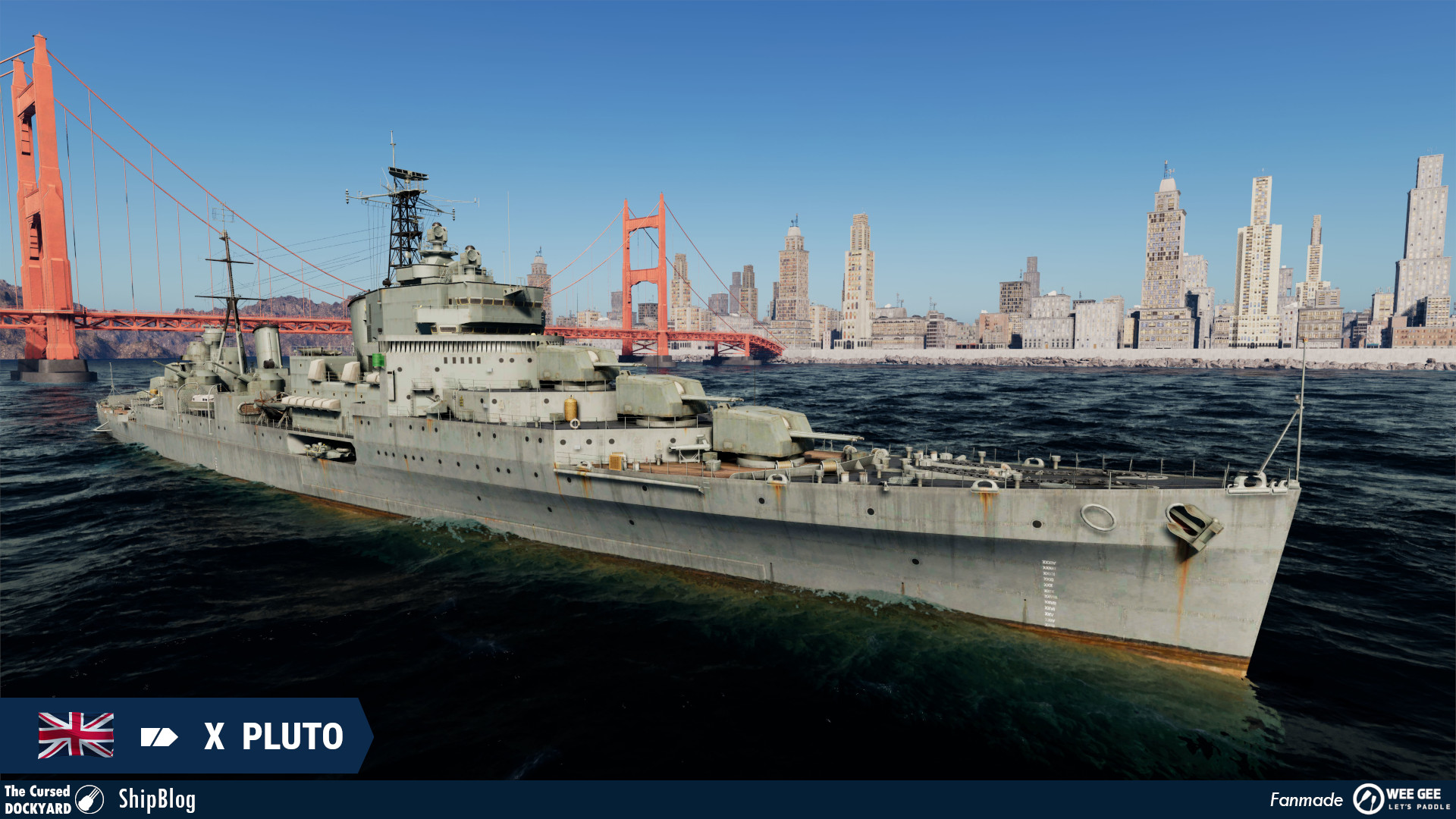British Light Cruiser Nox, Tier V

The British light cruiser Nox is named after the goddess of night. At the end of World War I, the British Navy responded to rumors that the German Navy was building high-speed cruisers by redesigning D-class cruisers and submitting numerous proposals. The Nox level represents the design proposal for installing a small caliber rapid fire naval gun. This plan uses a dual mounted 113 mm/45 QF Mk.I (Mk.III UD gun base) gun as a dual purpose high altitude gun. This type of artillery uses fixed ammunition with a firing rate of up to 12 rounds per minute, commonly found on aircraft carriers such as the HMS Royal Ark and the HMS Glory.
British Light Cruiser Sirius, Tier VI

The British light cruiser Sirius is named after the main sequence star Sirius in the constellation Canis Major. She is the fifth ship in the second construction batch of the Dido class cruisers. Unlike the first batch, the Sirius was equipped with five dual mounted 133mm high flat dual purpose guns, which are considered the largest caliber high flat dual purpose guns that can be loaded manually. However, the small space inside the gun turret is not conducive to maintenance and also slows down the loading speed. Sirius participated in the attack on the German Italian transport fleet as a member of the Q fleet in 1942, and also participated in the capture of Sicily and Normandy landings, making remarkable achievements in the war.
British Light Cruiser Minerva, Tier VII

The British light cruiser Minerva, named after the goddess of wisdom, corresponds to the Minerva in the celestial body. Minerva is based on one of the many construction plans for the Dido class cruiser. Starting from the current class of ships in this series, all ships have access to specialized maintenance team consumables which can effectively address the issue of low survivability due to weak armor. This plan is equipped with six dual mounted 133mm RP10 Mark I * dual purpose guns. Compared to the Siris, the main gun of the ship has improved in turret design, large space and enhanced armor, and an increase in firing rate to 9 rounds per minute. The short fuse armor piercing projectile unique to the British Navy is very effective against light armored ships. However, due to insufficient production of the gun and the turret obstructing the view of the front bridge command room, it was not actually installed.
British Light Cruiser Bacchus, Tier VIII

British light cruiser Bacchus, named after the god of wine plants, corresponds to the Bacchus star in celestial bodies. To compensate for the shortcomings of outdated and insufficient firepower in the main gun fire control and sighting system of combat class destroyers, the British Navy has designed a type of cruiser to coordinate and command combat class destroyers. The design drew inspiration from the hull construction ideas of the Edinburgh class cruiser. At the same time, six dual 113mm RP10 Mark IV rapid fire guns were installed along the central axis. This gun uses split ammunition for better ballistic performance. The salvo damage per minute is considerable, with a firing rate of approximately 15-20 rounds per minute. However, due to the poor financial situation in the UK, the construction of this class of ship was not carried out.
British Light Cruiser Somnus, Tier IX

The British light cruiser Somnus is named after the God of Sleep. Somnus is a project based on the modernization of the British Navy's light cruisers in the Dido class and Edinburgh class. The initial plan was to carry a 133 mm naval gun with a lower firing rate, but it was not enough to cope with the threat posed by the rapid development of aviation technology in the later stages of World War II. Consequently, the guns were replaced with 113mm RP10 Mark IV naval guns. After the war, this type of naval gun became the standard main gun caliber for British Navy destroyers. This class will replace the rear torpedo group with a more advanced anti-aircraft gun group and additional anti-aircraft firepower and electronic equipment will improve its capabilities against jet aircraft.
British Light Cruiser Pluto, Tier X

The British light cruiser Pluto, named after the Roman god of the underworld, corresponds to Pluto as the celestial body. The main gun of the Pluto was the N2 127mm naval gun developed for the 1950 Large Destroyer Program. Equipped with advanced ammunition supply and heat dissipation systems, the main gun with an average firing rate of 2.8 seconds can dump a large amount of firepower on enemy ships in a short period of time. Its excellent trajectory can help Pluto attack further targets. Modern masts provide a favorable platform for installing new fire control equipment and advanced fire control radar can coordinate naval guns on incoming enemy aircraft. In a short time, the enemy planes will be wiped out and cease to exist.
British Light Supercruiser Uranus

The super British light cruiser Uranus, named after the Roman god of the sky, corresponds to Uranus as the celestial body. After World War II, British colonies and territories continued to erupt in uprisings, threatening British rule. The British Navy has restarted the design and rearmament of new cruisers. Uranus was a product of a failed struggle in Britain. By introducing American technology, the N1 127mm rapid fire gun replaced the slightly outdated 113mm naval gun. The automatic loader and water cooling device allowed the gun to continuously fire and increased the theoretical firing rate of the gun to 66 rounds per minute. However, due to the excessive weight of the turret, it has to be installed on the ship in a single mount. Small caliber anti-aircraft guns and torpedoes have been replaced by electronic devices such as radar and fire control, which greatly improved enemy detection and reconnaissance capabilities.